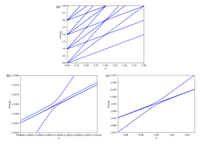
Parametric hypersensitivity and transport in the steady-state open-system Holstein model
The behavior of open quantum systems is of great interest in many areas such as chemical dynamics, biological systems, and quantum computing . Due to environmental effects such as dissipation and driving, these systems can display nonequilibrium steady states (NESS) that differ significantly from the closed-system dynamics .

On propagation of information in quantum mechanics and maximal velocity bounds
The study of evolution of information in condensed matter physics is an active, robust area of research with many profound results. At the same time, perhaps due to the difficulty of experimental implementation, with the exception of a few works on quantum open systems, this fundamental issue was not tackled in the original setting of quantum mechanics, i.e. at zero particle density. In this paper, we address this subject in a systematic way.

Hamiltonian Learning via Shadow Tomography of Pseudo- Choi States
Identifying the system Hamiltonian is a central problem in physics, as the Hamiltonian uniquely
describes the dynamics of any closed quantum system. Additionally, as quantum computers evolve, the need to characterize errors in their behaviour is becoming increasingly important, and as a result, several classes of quantum certification protocols have been designed to ensure quantum devices behave as intended.
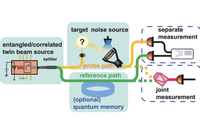
Opportunities and Challenges in Quantum-Enhanced Optical Target Detection
Light is a powerful tool for target detection to determine the presence, distance, and physical properties of a target object. Compared to other transmitters of energy (e.g., microwave and acoustic waves), light offers unique advantages due to its high resolution and directionality. In recent years, the rapid development of miniaturized and integrated optical systems has also helped optical target detection systems meet the growing demands of emerging applications such as autonomous driving.

Hidden Multidimensional Modulation Side Channels in Quantum Protocols
Quantum protocols such as quantum key distribution (QKD) and blind quantum computing allow for information-theoretic, quantum-safe security . Thanks to measurement-device-independent QKD (MDI QKD), all side channels on the detection end can be completely eliminated . Therefore, the source, as well as device-independent (DI) QKD are the last frontiers of investigation for security, with DI QKD remaining impractical due to its demanding requirements, such as near-perfect detector efficiencies.
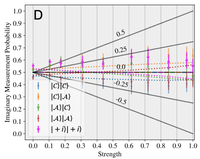
Variable-strength nonlocal measurements reveal quantum violations of classical counting principles
Quantum theory has proven wildly successful in predicting properties of systems whose past or future are specified. Applying the theory to systems with a definite past and future yields infamously counterintuitive predictions, e.g., three quantum pigeons can apparently occupy two pigeonholes without any pair occupying the same pigeonhole. Are such counterintuitive predictions merely an artifact of measurement disturbance?

Simulating Vibrational Dynamics on Bosonic Quantum Devices
Quantum algorithms for quantum chemistry on qubit-based quantum devices have seen tremendous development over the past decade. Although algorithms for electronic structure theory have been at the forefront of these advances, calculation of vibrational and vibronic spectra have also recently started gaining attention.5−15 However, the latter algorithms require a boson-to-qubit mapping that necessitates truncating the bosonic Fock space above a chosen threshold.
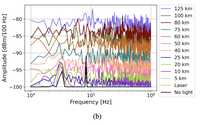
Long-fiber Sagnac interferometers for twin-field quantum key distribution networks
Based on carriers that cannot be copied or eavesdropped without notice to the communicating parties, quantum key distribution (QKD) allows remote users to establish shared encryption keys with information-theoretic security. QKD networks are an important building block for large-scale quantum networks and have been studied extensively [5– 12 ].
However, their key rates are limited by the repeaterless bounds on the key rate scaling with channel loss.
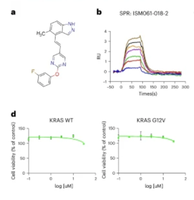
Quantum-computing-enhanced algorithm unveils potential KRAS inhibitors
Drug discovery is a multifaceted and resource-intensive process encompassing the discovery, development and comprehensive testing of new molecules. Typically extending over a decade and incurring substantial costs, the pharmaceutical industry faces substantial financial risks. The pressing need for efficiency and innovation in drug discovery has led to integrating advanced computational tools into traditional pharmaceutical research methodologies.

Emergent 𝑠-wave interactions in orbitally active quasi-two-dimensional Fermi gases
Orbital degrees of freedom are natural in electronic materials, reflecting the valence structure of their atomic constituents. Conversely, neutral atoms in optical lattices typically occupy the lowest-energy band and interact through 𝑠-wave interactions. Pioneering experiments employing excited orbital bands have revealed new phenomena including chiral many-body states . Furthermore, theoretical work suggests new types of quantum simulation and rich physics of extended Hubbard models.
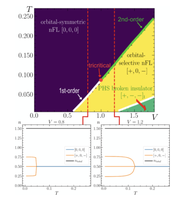
Orbital selective order and ℤ3 Potts nematicity from a non-Fermi liquid
The breaking of the crystalline rotational symmetry for electrons in solids, termed “electronic nematic order” in analogy with liquid crystals, has been reported in diverse quantum materials ranging from semiconductor two-dimensional (2D) electron gases in the quantum Hall regime to unconventional superconductors such as heavy-fermion systems , CuO-, and Fe-based superconductors , and disordered Sr3Ru2O7.
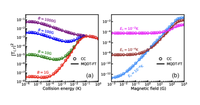
Multichannel Quantum Defect Theory with a Frame Transformation for Ultracold Atom-Molecule Collisions in Magnetic Fields
Recent advances in cooling and trapping diatomic and polyatomic molecules have established ultracold molecular gases as an emerging platform for quantum information science, ultracold chemistry, and precision searches for new physics beyond the standard model. The exquisite control over molecular degrees of freedom achieved in these experiments enables the exploration of novel regimes of ultracold chemical dynamics tunable by external electromagnetic fields.
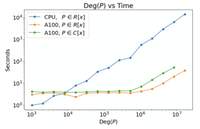
Generalized Quantum Signal Processing
The majority of prominent quantum algorithms, such as Hamiltonian simulation, quantum search, and factoring, can be fundamentally reduced to the central task of implementing a matrix function of a Hamiltonian. Quantum signal processing (QSP) currently stand as the most efficient technique for implementing such functions of block-encoded matrices.
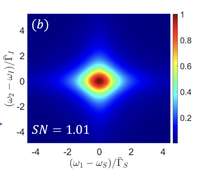
Quantum Calculation of Photon Pair Generation in Quasi-phase Matched AlGaAs Microrings
Spontaneous parametric down-conversion (SPDC) is routinely used to create entangled photon pairs. Generation rates are limited by χ(2) magnitudes and phase matching issues, but in integrated structures the first limitation can be alleviated by using ring resonators to increase the local field intensity, and the second by a “built-in” quasi- phase matching (QPM) condition that is present for microrings fabricated out of III-V semiconductors

Bath-Engineering Magnetic Order in Quantum Spin Chains: An Analytic Mapping Approach
Spin chains offer a versatile platform for the study of quantum materials. They can capture a wide range of complex and exotic phenomena from magnetic effects to topological phases. These effects are observed in a variety of materials, including quantum magnets, spin liquids, and quantum wires. Beyond ideal models, in reality, environmental degrees of freedom such as lattice phonons or engineered cavity modes couple to the spin degrees of freedom.
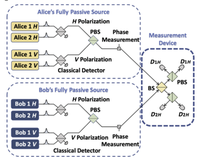
Fully passive measurement-device-independent quantum key distribution
The laws of quantum mechanics ensure theoretically secure communication using quantum key distribution (QKD) between two parties. However, practically implementing QKD systems is still a challenge due to the lack of perfect equipment. Hence, physicists have been working on eliminating side channels arising from these imperfections.
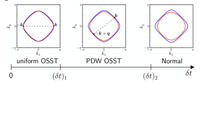
Finite-momentum and field-induced pairings in orbital-singlet spin-triplet superconductors
Superconductivity is conventionally understood as the condensation of electron pairs near the Fermi energy with momentum 𝐤 and −𝐤, i.e., a zero center-of-mass momentum, referred to as uniform pairing. A term in the Hamiltonian that breaks the degeneracy of the paired electrons generally suppresses the pairing.
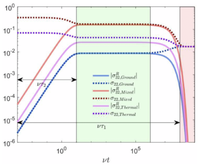
Bypassing thermalization timescales in temperature estimation using prethermal probes
The classical notion of thermometry is rooted in the zeroth law of thermodynamics whereby the temperature of a sample is inferred using a small ancillary system, a probe. This probe is brought into contact with the sample until thermal equilibrium is reached. Subsequently, the temperature of the sample is inferred by measuring a physically relevant observable of the probe. From this protocol, it follows that an ideal probe should offer temperature estimates that are both accurate and rapid.

High-Order Randomized Compiler for Hamiltonian Simulation
Our work introduces a method called qSWIFT, a high-order randomized algorithm for Hamiltonian simulation. This method is a significant improvement over existing methods, such as qDRIFT, as it requires far fewer computational steps (or gates) to achieve the same level of precision. The qSWIFT algorithm is designed in such a way that the number of gates required does not depend on the number of terms in the Hamiltonian, making it more efficient for complex systems.
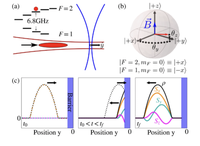
Spin Rotations in a Bose-Einstein Condensate Driven by Counterflow and Spin-Independent Interactions
Spin dynamics in cold atomic gases exhibit rich phenomena due to the interplay of particle interactions, quantum coherence, and particle statistics. In a Bose-Einstein condensate (BEC) with only contact interactions, spin dynamics can be induced by the spin dependence of the interaction strengths between particles. If interspin and intraspin interaction strengths are the same, on the other hand, there is only one scattering length, a.
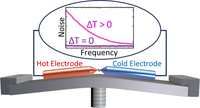
Delta-T Flicker Noise Demonstrated with Molecular Junctions
Electronic flicker noise is the most abundant noise in electronic conductors. Here, we identify an unknown type of electronic flicker noise that is found when a temperature difference is applied across a nanoscale conductor. While this noise can be a performance-limiting factor, on the positive side, it can detect temperature differences across a large variety of nanoscale conductors, down to atomic-scale junctions with no special setup requirements.
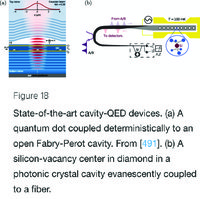
Quantum repeaters: from quantum networks to the quantum internet
A quantum internet is the holy grail of quantum information processing, enabling the deployment of a broad range of quantum technologies and protocols on a global scale. However, numerous challenges must be addressed before the quantum internet can become a reality.
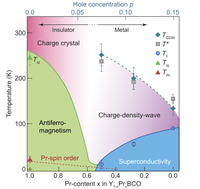
Discovery of charge order in a cuprate Mott insulator
High-temperature superconductivity (HTS) and charge density waves (CDW) are two prominent types of quantum electronic order that occur in cuprates. Using x-ray spectroscopy, muon spin rotation and electrical transport measurements on a special family of lanthanide-based cuprates, the authors have discovered a continuous evolution of the CDW order from the superconducting regime to the Mott insulator limit, indicating both HTS and CDW to be emergent phenomena of strong-correlation physics.

A Hybrid Quantum-Classical Algorithm for Multichannel Quantum Scattering of Atoms and Molecules
This paper proposes a hybrid quantum-classical algorithm for solving the time-independent Schrödinger equation for atomic and molecular collisions. It discovers that calculating scattering cross sections and rates for complex molecular collisions on NISQ quantum processors is possible. Some potential applications of their research include: scalable digital quantum computation of gas-phase bimolecular collisions and reactions of relevance to astrochemistry and ultracold chemistry.
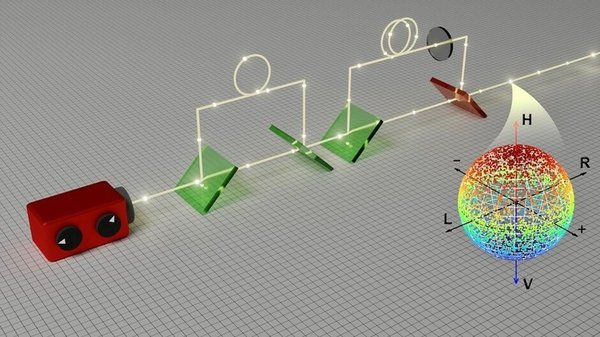
Fully Passive Quantum Key Distribution
The authors have proposed a Quantum Key Distribution (QKD) scheme without any modulators, which removes a major source of side channels on QKD sources. The proposal suggests a new type of passive linear optical QKD source. This breakthrough can help improve the security of practical QKD systems.
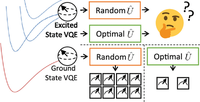
Measurement optimization techniques for excited electronic states in near-term quantum computing algorithms
The authors investigate how to improve the quantum measurement efficiency for
the variational quantum eigensolver (VQE). Since VQE is one of the most popular near-term quantum algorithms for solving the electronic structure problem. They achieve this goal by investigating various measurement techniques to two widely used excited state VQE algorithms: multistate contraction and quantum subspace expansion.
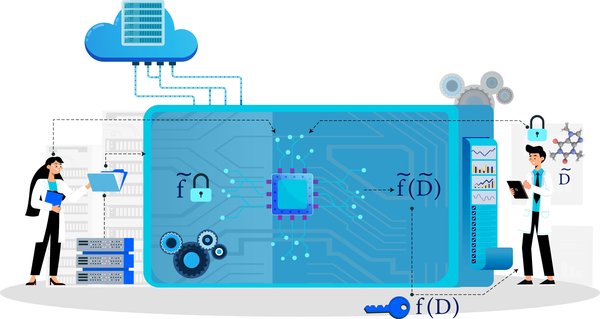
Encrypted machine learning of molecular quantum properties
This paper discusses implementing Encrypted Machine Learning models by using oblivious transfer enabling, and secure predictions of molecular quantum properties. These secure and computationally feasible models can better protect privacy in chemistry and medical sciences, such as protecting customers' medical data. Overall, the team discusses recent findings and limitations of these models.
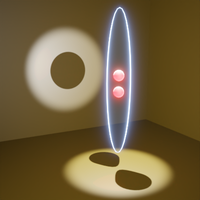
Emergent s -Wave Interactions between Identical Fermions in Quasi-One-Dimensional Geometries
Fermions sharing orbital excitation in a Bell-singlet are found to scatter with even exchange symmetry. This new collisional mode is enabled by a non-equilibrium occupation of the excited transverse state, which was at first unintentional -- a fortuitous impurity -- and later controlled in our experimental protocol. This finding points to new combinations of dimensionality and scattering symmetry.
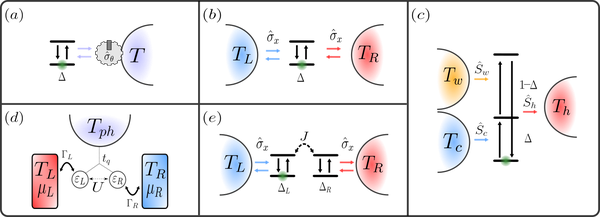
Effective-Hamiltonian Theory of Open Quantum Systems at Strong Coupling
The paper presents a new theoretical framework that allows an analytical treatment of quantum systems at strong coupling with their surroundings, bringing deep understanding of the impact of strong system-bath coupling effects on open quantum system phenomena. It describes the application of this general approach to central problems in quantum thermodynamics such as quantum thermalization, heat transport, quantum refrigeration, nanoscale thermoelectric power generators & dissipative spin chains.

Characterization of State-Preparation Uncertainty in Quantum Key Distribution
The authors investigate how to create a secure quantum key distribution (QKD) by performing a proof-of-principle demonstration of the experimental techniques for characterizing the source phase and intensity fluctuation in commercial QKD systems.

Unitary p-wave interactions between fermions in an optical lattice
Researchers study how isolated pairs of atoms interact with each other. Namely, they observed a theoretical limit of p-wave forces for the first time. This paper provides insight into quantum simulations.

